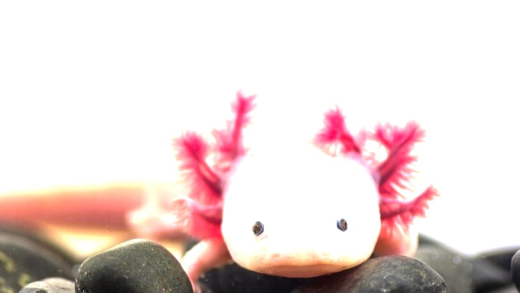Quetzals are vibrant birds found in Central and South America, known for their stunning plumage and ecological significance. The resplendent quetzal stands out with its striking features and cultural importance in Mesoamerica. However, quetzals face habitat loss and other threats, making conservation efforts essential. Fun facts highlight their unique traits, while their representation in modern culture emphasizes their enduring appeal.
Quetzal Species Overview
Quetzal species are stunning birds predominantly found in Central and South America. These remarkable birds are celebrated for their vibrant plumage and unique behaviors. Among the various species of quetzals, the most recognized is the resplendent quetzal, known for its brilliant green and red feathers. Other quetzal species include the lesser, white-tipped, and golden-headed quetzals. Each species exhibits distinct features and habitats.
Understanding the diversity of quetzal species is crucial for birdwatchers and conservationists alike. The quetzal species showcase a range of sizes, colors, and behaviors that make them fascinating subjects for study. For example:
- Resplendent Quetzal: This species has striking green feathers with a long tail.
- Lesser Quetzal: Smaller and less colorful, it has a more subdued appearance.
- Golden-headed Quetzal: Known for its unique golden crown and vibrant body.
These species inhabit various ecosystems, including tropical rainforests and cloud forests, which provide essential resources for their survival. By exploring the different quetzal species, one gains insight into their ecological roles and the importance of preserving their habitats.
Meet the Resplendent Quetzal
The resplendent quetzal is arguably the most iconic member of the quetzal family. With its brilliant emerald green body and striking red breast, this bird captivates anyone fortunate enough to see it. Its long, iridescent tail feathers can reach lengths of up to three feet, making it a spectacular sight against the lush backdrop of its natural habitat.
What makes the resplendent quetzal truly unique are its behaviors. These birds are known for their distinct mating displays, where males perform elaborate aerial displays to attract females. Furthermore, their diet primarily consists of fruits, especially avocados, which play a critical role in the ecosystem by aiding in seed dispersal.
This species holds significant cultural value in Mesoamerica, where it symbolizes freedom and beauty. Its vibrant colors and majestic flight have inspired countless myths and stories. Thus, learning about the resplendent quetzal not only highlights its biological uniqueness but also its cultural significance.
Unique Characteristics of Quetzal Species
Each quetzal species possesses unique traits that set them apart from one another. Understanding these characteristics provides a deeper appreciation for their diversity. For instance:
- Coloration: The resplendent quetzal is known for its vivid green and red plumage, while the lesser quetzal is more muted in color.
- Size: The golden-headed quetzal is smaller compared to its resplendent counterpart.
- Behavior: Different species exhibit varying behaviors, particularly in mating rituals and nesting habits.
These differences are crucial for their adaptation to specific habitats and ecological niches. For example, the resplendent quetzal prefers higher altitudes, while other species may thrive in lower elevations. Recognizing these unique traits helps in the conservation efforts aimed at protecting these magnificent birds.
Cultural Importance of the Resplendent Quetzal
The resplendent quetzal holds a prominent place in Mesoamerican culture, symbolizing freedom, beauty, and wealth. Ancient civilizations, such as the Maya and Aztecs, revered this bird, often associating it with their deities. The vibrant feathers of the quetzal were so valuable that they were used as currency, and only the elite could wear them. This cultural significance is still evident today, as the resplendent quetzal is the national bird of Guatemala, representing the country’s rich heritage.
In art and literature, the quetzal appears as a motif reflecting the natural beauty of the region. Its presence in folklore and myths signifies its role as a messenger between the earthly realm and the divine. The bird’s striking appearance and elusive nature make it a subject of admiration and respect.
Understanding the cultural importance of the resplendent quetzal helps appreciate its role in preserving Mesoamerican traditions and biodiversity. As a symbol of freedom, the quetzal inspires many to advocate for conservation efforts and protect its habitat.
Quetzalcóatl and Its Connection to the Quetzal
The quetzal is intricately linked to the Mesoamerican deity Quetzalcóatl, often depicted as a feathered serpent. This god represents wisdom, wind, and the morning star, bridging the gap between the heavens and earth. The name “Quetzalcóatl” translates to “feathered serpent,” highlighting the significance of feathers in Mesoamerican spirituality.
In mythology, Quetzalcóatl is associated with creation, culture, and the agricultural calendar. The resplendent quetzal, with its vivid plumage, embodies the essence of this deity, symbolizing life and fertility. This connection deepens the cultural significance of the quetzal, as it is seen not just as a bird but as a manifestation of divine traits.
Exploring this mythology reveals how the quetzal’s beauty and rarity have made it a symbol of aspiration and reverence among various Mesoamerican cultures. The stories surrounding Quetzalcóatl and the quetzal continue to influence modern interpretations of identity and heritage in the region.
Comparing Quetzal Species
When examining the differences between quetzal species, the resplendent quetzal often stands out due to its vibrant coloration and unique behaviors. While all quetzals share certain traits, such as their insectivorous diet and preference for forested areas, each species has distinct characteristics.
- Resplendent Quetzal: Known for its bright green and red plumage, it is larger and more flamboyant than its relatives.
- Lesser Quetzal: This smaller species has a more subdued appearance, primarily green with a hint of blue.
- White-tipped Quetzal: Similar in size to the resplendent quetzal, it features a distinct white tip on its tail feathers.
- Golden-headed Quetzal: Recognized for its striking golden crown, this species is less common but equally captivating.
These differences are not just aesthetic; they reflect adaptations to their specific habitats. For instance, the resplendent quetzal thrives in higher altitudes, while others may prefer lower elevations or different ecosystems. By comparing these species, we gain insights into their evolutionary paths and the ecological roles they play in their environments.
Quetzal Habitats
Quetzal species thrive in diverse habitats across Central and South America. These birds predominantly inhabit tropical rainforests, cloud forests, and montane forests. The lush environments provide not only food but also the necessary shelter for nesting and breeding.
The resplendent quetzal is typically found in higher elevations, often above 1,200 meters (4,000 feet), where the cool, moist air supports its preferred habitats. The unique flora in these regions, such as avocados and wild figs, constitutes a significant part of their diet, which is essential for their survival.
On the other hand, the lesser quetzal prefers lower elevations and is often seen in more open forest areas. Understanding these habitat preferences is crucial for conservation efforts, as it helps identify which ecosystems need protection to ensure the survival of these magnificent birds.
Conservation Status
Quetzal populations face several threats that have raised concerns among conservationists. Habitat loss due to deforestation, agricultural expansion, and urbanization significantly impacts their natural environments. Additionally, hunting and poaching for their beautiful feathers pose further risks to their survival.
Efforts to conserve quetzals include establishing protected areas and promoting sustainable land-use practices. Organizations are also working to educate local communities about the importance of preserving quetzal habitats and the ecological roles these birds play. Raising awareness about the need for conservation is essential to ensure future generations can enjoy the beauty of quetzals.
Fun Facts About Quetzals
Quetzals are not just beautiful birds; they have fascinating traits that make them unique. Here are some fun facts:
- Colorful Feathers: The resplendent quetzal’s feathers can appear different colors depending on the angle of light, showcasing a stunning iridescence.
- Long Tail Feathers: Males have exceptionally long tail feathers that can grow up to three feet, used during courtship displays.
- Dietary Preferences: Quetzals primarily eat fruits, particularly avocados, which are vital for their nutrition and seed dispersal.
- Cultural Symbol: In many Mesoamerican cultures, the quetzal symbolizes freedom and wealth, making it an integral part of their heritage.
These intriguing aspects of quetzals not only capture the interest of birdwatchers but also highlight the importance of these birds in their ecosystems.
Quetzals in Popular Culture
Quetzals have made a significant impact on modern media, transcending their traditional cultural roots. Their vibrant images appear in various forms of art, literature, and even branding. The bird’s representation often evokes themes of beauty, freedom, and the natural world.
In contemporary literature, quetzals symbolize the connection between nature and humanity, often being featured in stories that emphasize environmental conservation. Similarly, they have been incorporated into logos and branding for eco-friendly products, underscoring their status as icons of biodiversity.
Understanding how quetzals are portrayed in popular culture helps appreciate their ongoing relevance and the continued efforts to raise awareness about their conservation needs.





Comments are closed.